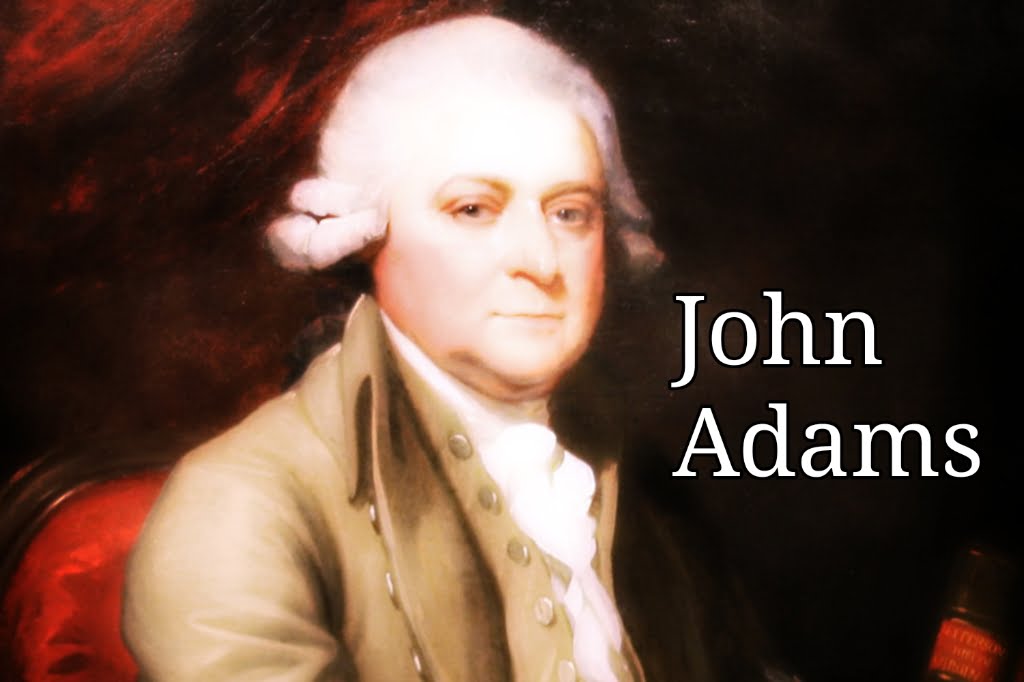“Biography of John Adams: Founding Father of the United States”

Today i brang for you the inspiring biography of an american iconic leader who shaped united state and if you are looking for the personalities then you came on the eight platform.
Meet John Adams, a wise and determined man who was the second president of the United States. and John Adams‘s ideas helped shape the country.
John Adams played a key role and using his intelligence and passion to make a difference in the early days of the United States. and his ideas helped build the foundation of the country.
Early Life and Education:
John Adams was born on 30 October 1735 in Braintree Massachusetts (now Quincy) was the eldest of three sons of John Adams Sr. Who was a farmer and her mother Susanna Boylston was a housewife who came from a prominent medical family.
He grew up on the family farm and attended Harvard College graduate in 1755.

Family life:
John Adams married to Abigail Smith They had six children including John Quincy Adams who become sixth President of the United States.
Also read it: https://theboiworld.com/the-founding-father-george-washingtons-legacy-in-liberty/
Political carrier:
John Adams’ political career was marked by significant contributions to the founding and early governance of the United States.
Early Political Involvement:
- Adams’ political journey began in the 1760s when he became involved in colonial opposition to British policies, particularly in response to the Stamp Act.
- He emerged as a prominent voice in Massachusetts against perceived British infringements on colonial rights.
- Diplomatic Missions:
- Adams served on diplomatic missions during the Revolutionary War, including roles in France and the Netherlands.
- His diplomatic efforts helped secure critical support for the American cause, contributing to the eventual success of the Revolution.
- Drafting State Constitution:
- Adams played a key role in drafting the Massachusetts Constitution in 1780, which became a model for other state constitutions and influenced the drafting of the U.S. Constitution.
- Vice Presidency:
- Adams was elected as Vice President of the United States under President George Washington in 1789.
- He presided over the Senate and played a supportive role to Washington, contributing to the early establishment of the federal government.
- Presidency:
- In 1797, Adams became the second President of the United States.
- His presidency was marked by challenges, including strained relations with France, leading to the “XYZ Affair” and the Quasi-War.
- Adams is notable for avoiding full-scale war with France through diplomacy and for preserving peace despite political pressures.
- Alien and Sedition Acts:
- Adams faced criticism for signing the Alien and Sedition Acts, controversial laws aimed at curbing dissent during a time of tension with France.
- These acts sparked debates about free speech and the limits of federal power.
- Post-Presidential Years:
- Adams retired from politics after one term as president.
- He spent his post-presidential years in Quincy, Massachusetts, engaging in correspondence and reflecting on his role in shaping the young nation.
John Adams’ political career was characterized by his commitment to principles, diplomatic.
and his instrumental role in the early development of the United States, both during and after the Revolutionary War.
John Adams undertook several important actions and initiatives for the benefit of the nation and its citizens.
President John Adams’s work did for the nation:
- Preserving Peace with France:
- Adams faced a tense diplomatic situation with France, known as the “Quasi-War,” during his presidency.
- Despite calls for war, Adams pursued a diplomatic resolution, avoiding a full-scale conflict and maintaining peace with France.
- Diplomacy and the Treaty of Mortefontaine:
- Adams successfully negotiated the Treaty of Mortefontaine (also known as the Convention of 1800) with France in 1800.
- This treaty ended the undeclared naval war and improved relations between the United States and France.
- Strengthening the Navy:
- Recognizing the importance of a strong navy for national defense, Adams took steps to build up and modernize the U.S. Navy.
- This laid the groundwork for the naval successes of the War of 1812.
- The Alien and Sedition Acts:
- Adams signed the Alien and Sedition Acts into law in 1798, during a time of perceived threat from France.
- The acts were controversial and aimed at controlling foreign influences and restricting criticism of the government. However, they also sparked debates about civil liberties and the First Amendment.
- Appointment of John Marshall:
- Adams appointed John Marshall as Chief Justice of the Supreme Court in 1801.
- Marshall’s tenure had a profound and lasting impact on the judiciary, contributing to the development of constitutional law.
- Commitment to Public Service:
- Adams was dedicated to the principles of public service and the well-being of the nation, even when faced with political challenges.
- His decision to prioritize diplomacy over war with France reflected a commitment to the best interests of the country.
- Peaceful Transition of Power:
- Adams played a crucial role in the peaceful transfer of power in the election of 1800.
- Despite political differences with Thomas Jefferson, Adams willingly stepped down after losing the election, setting a precedent for the peaceful transition of power in the United States.
While Adams faced criticism for some of his decisions, his commitment to diplomacy, national defense, and the peaceful transition of power contributed to the stability and growth of the young United States.
John Adams Award And Honor:
Honorary Degrees
Diplomatic Recognition
Peace Medal from Congress (1781)
Appointment of Chief Justice John Marshall (1801)
Adams Building (Library of Congress
Public Memorials
Presidential Library
Posthumous Recognition
Death:
John Adams, the second President of the
Adams’ death occurred on the same day as the death of Thomas Jefferson, his political rival and the third President of the United States. The timing of their deaths, on the Fourth of July, is often noted as a remarkable and symbolic coincidence, adding a unique historical layer to the legacy of these two Founding Fathers.
Note: Dear friend how do you feel after reading my article if it was interesting then please share it to your friend.
Written By: Shalik Khan







